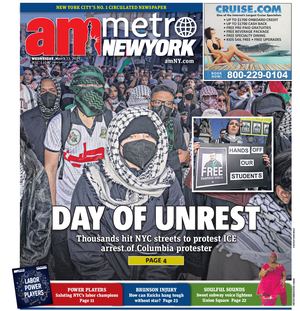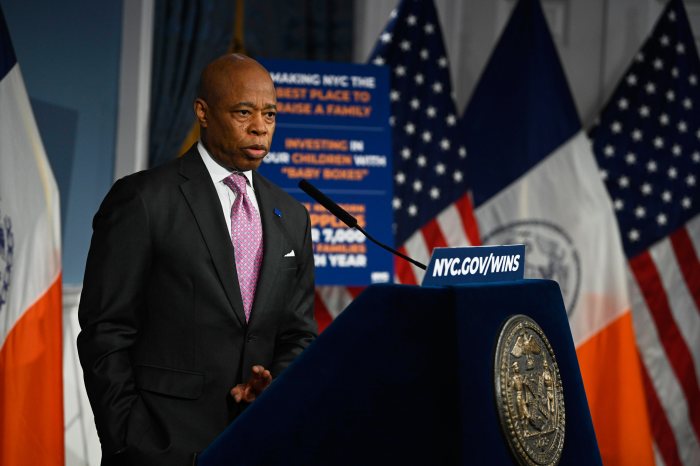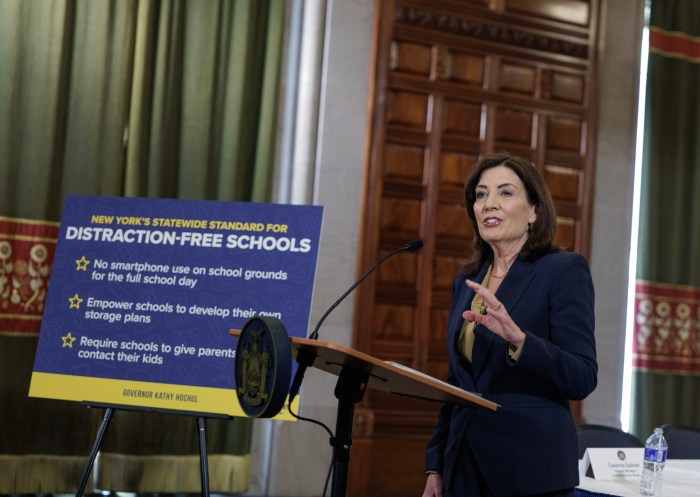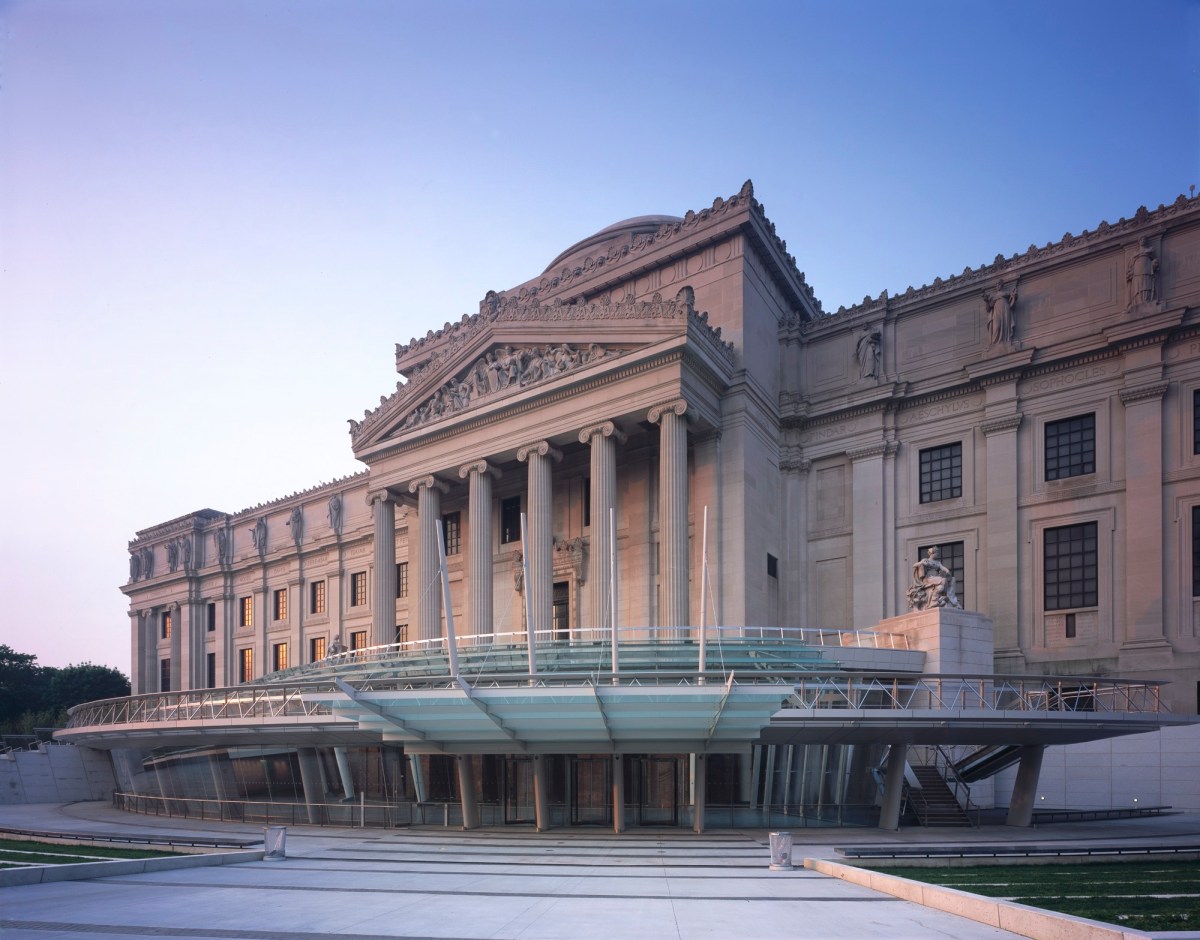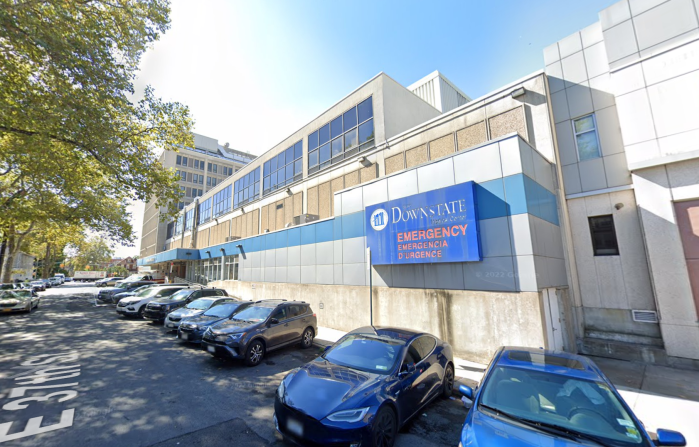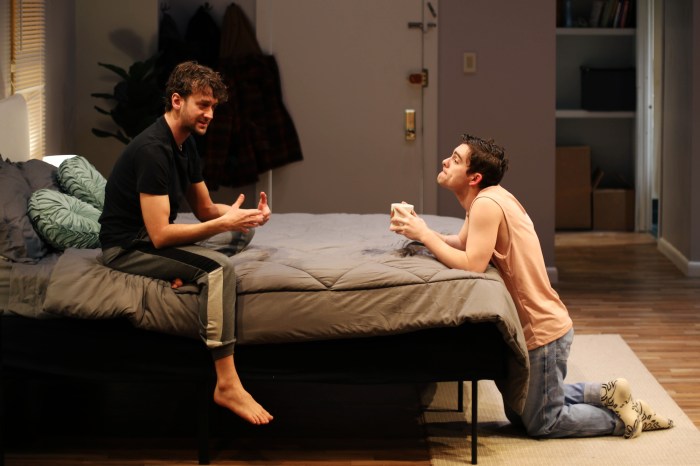BY LINCOLN ANDERSON | The big event Saturday evening was supposed to be Day Two of the summer version of “Manhattanhenge.” The sunset would perfectly align with the borough’s east-west cross streets, creating a golden canyon effect, and everyone and her cousin would snap photos of it and post them on social media.
Instead a massive blackout hit the West Side, starting just after 6:45 p.m., and affecting roughly 72,000 Con Edison customers, according to the utility. Power was eventually restored to all affected areas, five hours later, shortly before midnight.
The outage was initially confined to the blocks west of Fifth Ave. between 42nd and 72nd Sts. The New York Post reported that, by 9 p.m., the affected area had spread down to W. 12th St. in the Village, and police were telling motorists to avoid the blocks between W. 12th and W. 72nd Sts. west of Fifth Ave. The New York Times said the affected area didn’t go south of W. 30th St.
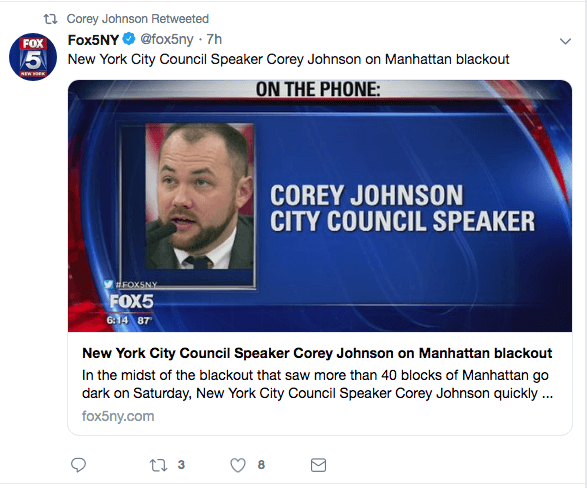
By Monday, Con Edison’s investigation had concluded that the “initiating event” of Saturday’s blackout was an electrical cable fire at W. 64th St., which, in turn, affected a substation on W. 49th St.
“Our inspection of equipment and preliminary review of system data over the past 40 hours indicates that the relay-protection system at our W. 65th St. substation did not operate as designed,” Con Ed said in a statement. “That system detects electrical faults and directs circuit breakers to isolate and de-energize those faults. The relay-protection system is designed with redundancies to provide high levels of reliability. In this case, primary and backup relay systems did not isolate a faulted 13,000-volt distribution cable at W. 64th St. and West End Ave.
“The failure of the protective relay systems ultimately resulted in isolation of the fault at the W. 49th St. transmission substation, and the subsequent loss of several electrical networks, starting at 6:47 p.m.”
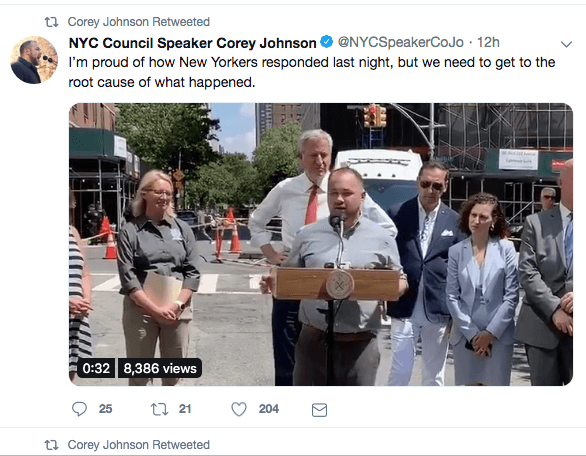
Helping New Yorkers to remain calm through it all was Council Speaker Corey Johnson, who regularly tweeted out informative updates about the situation, earning major kudos in the process. Meanwhile, Mayor Bill de Blasio was pilloried for being out of town, in Iowa, on his apparently quixotic presidential campaign, and for issuing just one, fairly generic tweet in response to the crisis.
Johnson, of course, also represents District 3, which covers the West Side from the Village to Columbus Circle, and which bore the brunt of the blackout.
Nicole Gelinas, a Hell’s Kitchen resident and Post columnist who lives near the problem substation, tweeted: “Corey Johnson is in touch with everyone, answering constituents’ concerned tweets, and doing minute-to-minute updates on the radio and Twitter where de Blasio is, like, where? Looking for a plane out of place whose population is smaller than people impacted by blackout.”
The mayor did not get back in town until 12:30 p.m. the next day, nearly 13 hours after electrical service had been restored, according to reports.
Other media figures likewise spun the blackout as a major moment for Johnson but another blot on de Blasio’s record, adding to his reputation as an “absentee mayor.”
Jessica Winter, executive editor of newyorker.com, tweeted: “Corey Johnson is the mayor now.”
Indeed, House Speaker Nancy Pelosi might dismiss Congressmember Alexandria Ocasio-Cortez and her “Twitter world” as being just a lot of hype. But during the blackout, many really appreciated and relied on Johnson’s tweets.
Ben Max, executive editor of Gotham Gazette, praised Johnson’s Twitter skills, tweeting: “Given AOC [is] in another stratosphere, no one in New York politics comes even close to Corey Johnson in understanding how important twitter can be.”
Meanwhile, on Facebook, East Villager Dottie Wilson posted that the Empire State Building was dark. She said she initially thought it was a protest against the deportation raids that Immigration and Customs Enforcement agents started this past weekend.
“I thought it was because ICE was coming,” she posted, “but it’s because of a HUGE blackout Times Sq, theater, UWS, Columbus Circle, Lincoln Center, TRAFFIC LIGHTS, b’way show… People trapped in elevators and on trains!”
Carrying on amidst the crisis, casts of Broadway shows continued their performances on the sidewalks in front of the theaters.
